Christchurch: Garden City 2.0 – taking ownership from the flaxroots up
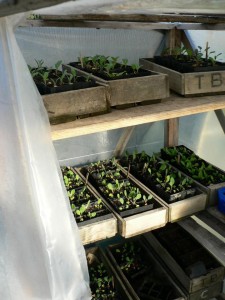
Kaiapoi Community Garden
by Steve Carter
How about we do the Garden City differently this time around?
Alongside many of the changes wrought by the Christchurch earthquakes, there has been a seizing of opportunities to rethink the ways we do things. It’s being called ‘The New Normal’ and it is affecting everything from business to community development, from politics to health.
So why wouldn’t we reconsider our approach to that strongest of Christchurch identities, the ‘Garden City’ … especially at a time when a global revolution is already happening in relation to food production.
Bailey Peryman, recently employed by the Canterbury Community Gardens Association as project worker for Garden City 2.0, agrees. “I think there’s a tide about to turn in relation to food and how we can take ownership of that within our community.”
The Garden City 2.0 moniker is a cheeky nod to the marketing brand that Christchurch portrays, but it also hints at a new, improved version post-quake. As Bailey explains, “Garden City 2.0 is a programme which is about activating a culture of food and learning about food in local communities, a cultural shift in the way people interact with their food.”
Of course, a lot of community gardening already exists in Christchurch but, as Bailey says, it isn’t well coordinated in a way that leads to more participation. “I’m passionate about community gardening,” he tells me, “But the wider perception is of a highly social activity rooted in the middle class. Little focus is on the potential for people to produce a whole load of organic, healthy food and then share that in their community.”
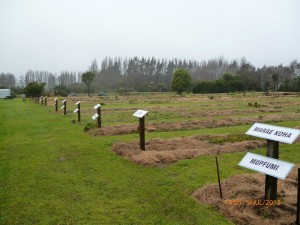
Waiora Trust Community Gardens
The growing global movement of relocalisation specifically addresses issues of food poverty, food miles and disconnection from our food sources. There is a subversive community empowerment ethic behind it that chimes nicely with many of the flaxroots initiatives emerging across Christchurch communities as we recover from the changes of the past couple of years. It is about communities taking care of one of their most basic needs and generating a whole heap of other benefits along the way.
Bailey sees those benefits in their widest context. The connection between food and health is perhaps an obvious one when considered solely in the context of nutrition, but initiatives like this are informed by a much broader view of health. It is about learning, about connection, about sharing and self-reliance. It is about health seen as both physical and mental, as something rooted in communities and in culture and identity.
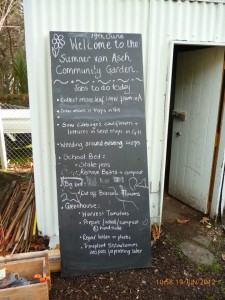
Sumner van Asch Community Garden
The Garden City 2.0 kaupapa begins, Bailey says, with simply, “Doing what’s necessary, and that is creating the space and the time for people to practice these things. What hasn’t been done is the most basic thing and that is taking a look at what is already going on, so that is what the first stage will be.”
Alongside the local research and promotion is a broader view: taking a look at what is already going on in Aotearoa and globally, and sharing those projects, seeing what might apply in Christchurch … inspiring people to be involved.
If the intention is to start small, Bailey also sees tremendous potential ahead: “Already, without even looking for new projects, I know of dozens of spaces and interested people.” The aim now is to bring them together into a more consolidated movement for change in the city.
With a huge tract of land becoming available through the demolitions in the Residential Red Zone, yet with no strategic-level decisions made on what will happen with that land, there is a strong advocacy movement that areas be made into large community sources of food and learning for health.
And there are various ideas about what community gardening could look like … Why not follow on the heels of places like Seattle and establish a food forest on the banks of the Avon? Why not large areas of native plantings and the promotion of the cultural learning that might stem from that – in rongoa, in native foods, the return of native birds long gone from city suburbs?
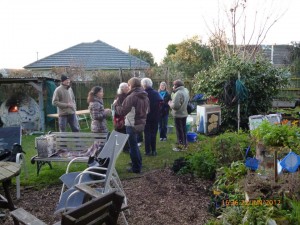
Okeover Community Garden
There has already been a campaign of asset mapping in the Red Zone – the intention being to retain the many established fruit trees and bushes, areas of native vegetation, and vegetable gardens that have been worked for years on the rich soils of the river banks.
The next stage is to fire up a strong ethic of community involvement in the maintenance and further development of all these in collaboration with those existing ‘hubs’ for learning and health.
Bailey plants his project neatly into the whole dynamic Christchurch situation: “There is no starting point of this new normal, the City 2.0 … it’s already happening. If you want to change anything about your lifestyle the time is now. There are so many good excuses that have been provided by this earthquake to change your life.”
It all starts with food as a positive focus for change and for healthy living.
Now that is what I call a Garden City.
For more information on Garden City 2.0, or to get involved in the various intiatives springing up across the city, check out the Facebook page: Garden City 2.0
Read the inspiring stories of our Christchurch sponsors:
 SHAC – The Sustainable Habitat Challenge – is a network of architects, builders, engineers, designers, building scientists, students and young professionals interested in taking positive action in their communities today.
SHAC – The Sustainable Habitat Challenge – is a network of architects, builders, engineers, designers, building scientists, students and young professionals interested in taking positive action in their communities today.
On the 2-3 May 2012, SHAC presented the 2nd annual workshop on micro-architecture at the Christchurch Polytechnic Student Centre. Sixty attendees discussed temporary architecture, simple buildings, and the reuse of building material.
“People cherish their culture through recycling” – those are the words of Wang Shu, the 2012 winner of the Pritzker architecture prize. The demolition of red stickered housing and CBD buildings does not have to mean the eradication of Christchurch’s history or culture – nearly all materials can be reused in new construction, incorporating local memories and fusing the past with the present.
What is permanent in this land of earthquakes? In San Francisco, the Palace of Fine Arts was built in 1915 as a temporary building for the Panama-Pacific Exposition and still stands today as an icon of the city. From the cardboard cathedral to the convention centre – how long will they serve us?
“Simple buildings are key for affordability” said Canadian architect Brian McKay Lyons, recently interviewed on Nine to Noon with Kim Hill. Lyons, from Nova Scotia, says “simple buildings are what we farmers and fishermen build when we can’t afford to get things wrong”
This symposium brought together elements of the growing Regeneration movement – people working together to take positive action in their communities.
Community Rebuild – for the Whole House Reuse project Juliet Arnott
Community Development – Joshua Durrant, Jess Smale, Sophie Moore
Positive Action – Gapfiller Trust
 YTONG® is an alternative building system made from light-weight Aerated Autoclaved Concrete (AAC). It was invented in Sweden in 1923 and further developed under the YTONG® brand it turned into a world-wide success.
YTONG® is an alternative building system made from light-weight Aerated Autoclaved Concrete (AAC). It was invented in Sweden in 1923 and further developed under the YTONG® brand it turned into a world-wide success.
Environmentally friendly and non-toxic – From the manufacturing process to shipment, construction, and waste disposal YTONG® is in ecological balance.
Good sound absorption – effective sound barrier – The natural air cushion formed in the high-pressure steam curing of AAC can absorb the most possible noise.
Ensures high standard of well-being – YTONG® reduces temperature differences and humidity fluctuations and so ensures a comfortable and healthy room atmosphere.
Excellent workability – It is easy to erect a solid masonry structure quickly and precisely. Only few tools and implements are necessary.
Outstanding thermal insulation – Keeps buildings cool in summer and warm in winter saving on heating and air-conditioning.
YTONG® is fireproof and has a high fire rating – AAC is resistant to high temperatures for a longer period of time than any other solid building material. YTONG® is especially chosen for fireproof walls in commercial buildings.
Performs well in earthquakes – Thanks to its low weight and its plastic deformation properties the destructive force of earthquakes can be minimised.
 Social Innovation is a small, hardworking community engagement agency based in Christchurch. They work with leading non-profits, changemakers, progressive companies and government to mobilise everyday New Zealanders. Their expertise in this area comes from grassroots innovation on large-scale community action projects, including the Student Volunteer Army, A Day at the Beach Festival, Love your Coast and a number of other public participation initiatives. They know how to scale initiatives and achieve big results with large numbers of stakeholders.
Social Innovation is a small, hardworking community engagement agency based in Christchurch. They work with leading non-profits, changemakers, progressive companies and government to mobilise everyday New Zealanders. Their expertise in this area comes from grassroots innovation on large-scale community action projects, including the Student Volunteer Army, A Day at the Beach Festival, Love your Coast and a number of other public participation initiatives. They know how to scale initiatives and achieve big results with large numbers of stakeholders.
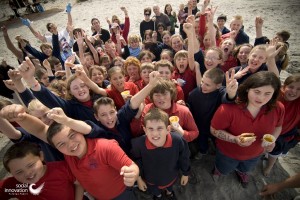 kiwi folk heroes like Kate Sheppard combined with the sheer power of modern technology. At the heart of what they do is supporting everyday New Zealanders to take action and participate fully in public life, in turn increasing the proportion of citizen’s who know that they can make a difference to the way things are.
kiwi folk heroes like Kate Sheppard combined with the sheer power of modern technology. At the heart of what they do is supporting everyday New Zealanders to take action and participate fully in public life, in turn increasing the proportion of citizen’s who know that they can make a difference to the way things are.Their services include strategy, leadership training, volunteer coordination & management, media and communications, project management and fundraising. Find out more at www.socialinnovation.org.nz or make direct contact via their studio-line on 03 337 0861
Ph: 03 337 0861 or [email protected]
The Local Good News initiative is officially endorsed by Mental Health New Zealand.
Got good news to share about your social enterprise? Join this inspiring line up of Christchurch sponsors, email [email protected]
loading...
loading...
Tags: christchurch, Christchurch Recover





great write up Steve and whoop Bailey you are doing the business out there. Ka pai Jade
loading...
loading...
I love Garden City 2.0 but lets not fall into the trap of calling for individualistic lifestyle changes when Ōtautahi needs so much more than that.
Real flaxroots change is collective.
So lets combine our seeds of change and sow them into the broken earth of our city – if we want to regenerate our communities the time is now!
loading...
loading...